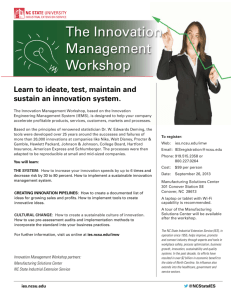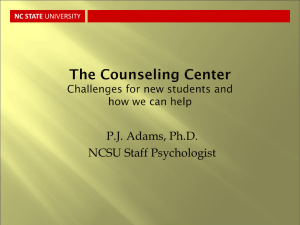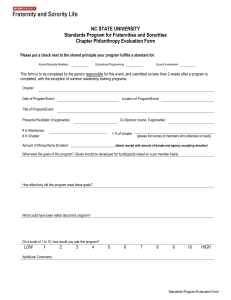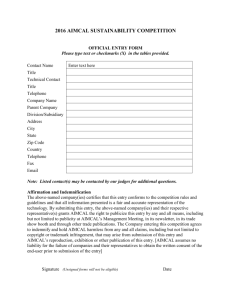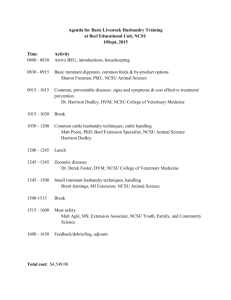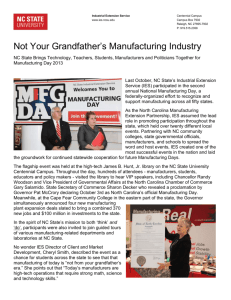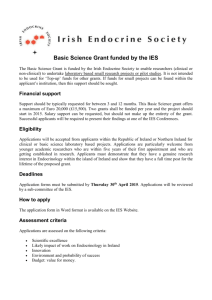Walmart's supplier sustainability requirements and process
advertisement
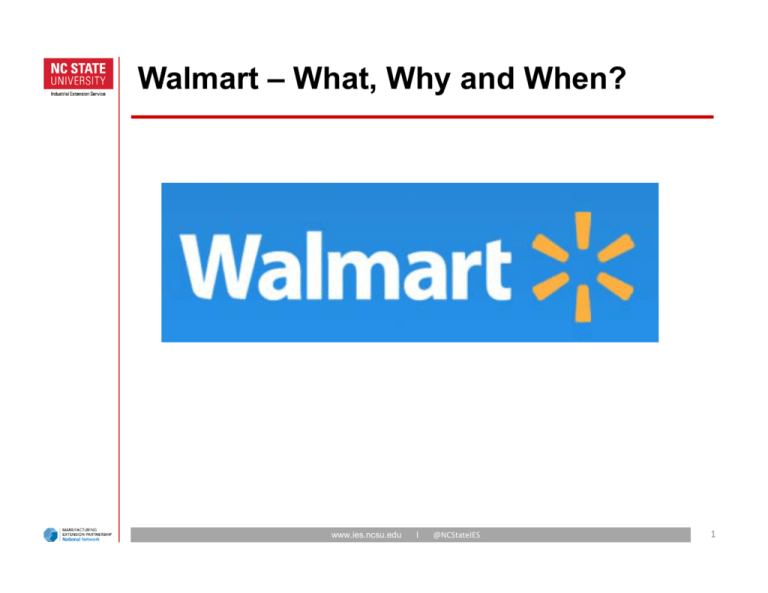
Walmart – What, Why and When? www.ies.ncsu.edu I @NCStateIES 1 Sustainability and Walmart Our three sustainability goals As the world's largest retailer, our actions have the potential to save our customers money and help ensure a better world for generations to come. At the same time, it sets the stage for a more financially stable and responsible Walmart. Our decisions in this area are tied to three aspirational goals: Energy -- Be supplied 100% by renewable energy Waste -- Create zero waste Products -- Sell products that sustain people and the environment www.ies.ncsu.edu I @NCStateIES 2 Walmart’s Impact vs. Suppliers www.ies.ncsu.edu I @NCStateIES 3 Walmart Scale up and Results www.ies.ncsu.edu I @NCStateIES 4 The Sustainability Consortium (TSC) Developing a sustainable standard for products The Sustainability Index is central to our ability to deliver sustainable products for our customers. Launched in 2009 in collaboration with The Sustainability Consortium (TSC), the Index helps retailers and their suppliers: • • • • Improve the sustainability of the products customers love Integrate sustainability into the business of buying and selling merchandise Reduce cost, improve product quality and create a more resilient supply chain Strengthen customers’ trust in retailers and the brands we carry www.ies.ncsu.edu I @NCStateIES 5 Supplier Survey Process - Launched in 2012 with TSC www.ies.ncsu.edu I @NCStateIES 6 TSC Survey - Four Step Cycle www.ies.ncsu.edu I @NCStateIES 7 What does Walmart Expect www.ies.ncsu.edu I @NCStateIES 8 Key improvements to TSC Questionnaires in 2015 include: A KPI cap with a maximum of 15 KPIs per TSC questionnaire, bringing more focus to sustainability conversations between customers and their suppliers. Further alignment with supplementary tools developed by organizations such as the Sustainable Apparel Coalition, Field to Market, and CDP. A bigger focus on impacts that are within the direct control of a Tier 1 or Tier 2 supplier. Many upstream KPIs that are difficult for a Tier 1 supplier to influence have been removed. Many KPIs are more quantitative. These new, quantitative KPIs are often harder to answer than their multiple choice predecessors and suppliers may need to use sampling methods to collect the necessary data. But we’re very excited about them because these KPIs will also provide much more valuable insight into the sustainability performance of a supplier’s products. www.ies.ncsu.edu I @NCStateIES 9 What is the time frame? The new survey questions are available NOW! - Supplies must purchase license to access SAP database - Look for product category toolkit in the SAP database under “content library” Survey’s open April 1st and close May 1st www.ies.ncsu.edu I @NCStateIES 10 References This content came directly from the 2015 SAP Walmart Webinar www.ies.ncsu.edu I @NCStateIES 11
